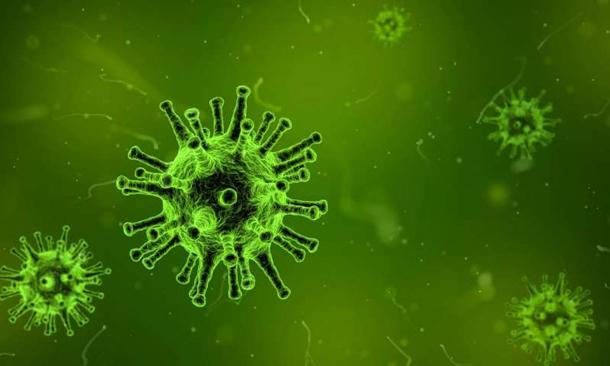Rapid genomic sequencing of coronavirus can help stop its spread
The novel coronavirus, which causes the disease COVID-19, is one of a group of viruses called coronaviruses, which also includes the 2003 SARS virus and the 2013 MERS virus.
Highly infectious viruses can spread across the world quickly, but our ability to sequence their genome and get a clear diagnosis has historically lagged behind, sometimes taking years. But that’s no longer the case.
Researchers in China were able to sequence the coronavirus genome and send that information to colleagues around the world in less than a month.
“This is amazing,” said Vincent Racaniello, a professor of microbiology and immunology at Columbia University and host of the podcast, “This Week in Virology.”
Related: What to call this new coronavirus? Some cautionary tales.
So, how did they do it?
“Every organism has some kind of genome — some of them are really big, some of them are really small, and they specify how to build a new organism,” Racaniello said. “When I got my PhD in the 1970s, there was no sequencing at all. You could not determine any genome sequence. And then the technology emerged over the next few years. When I was a postdoc, my job was to sequence the genome of polio virus. It took me one year, every day, to sequence it. That could be done today in 30 minutes by a company.”
In the intervening years, he continued, multiple technologies emerged, called “high-throughput next-generation sequencing,” that allow scientists to sequence any nucleic acid — RNA or DNA — quickly and with reasonably good accuracy.
“When I did my polio virus, I had purified virus — a lot of it,” Racaniello said. “Nowadays, you can have a crude sample, [like] a respiratory wash. Put a little saline in your nose and take it out and sequence everything that’s in it. And that’s why they were able to do that. They took lung wash from one of their patients, and they extracted the nucleic acids from it and were able to get the whole genome sequence very quickly. That is just stunning.”
Related: What we know about the coronavirus and how to respond
The current coronavirus outbreak likely got its start in the meat markets of Wuhan, China. While scientists still don’t know precisely how infectious this coronavirus is, it has already spread beyond China to countries in Asia, Europe, North America and North Africa, and fears of a global pandemic are spreading. Racaniello and other scientists want to provide a little reality check, however.
“I like to say that, compared to flu, coronaviruses are amateurs,” Racaniello said. “Flu is the most worrisome virus, as far as I’m concerned. It’s readily transmitted from person to person by the aerosols you make when you’re speaking or coughing or sneezing and it can kill a lot of people. It can kill up to 30,000 or 40,000 people a year in the US.”
By comparison, he notes, SARS, which is also a type of coronavirus, caused around 8,000 cases globally, resulting in about 800 deaths. “The virus that is currently spreading looks a lot like the SARS coronavirus and so I suspect it won’t be much worse than the SARS epidemic,” Racaniello said.
To date, however, the death toll in mainland China has reached 1,770, surpassing the death toll of SARS. At least 70,548 total cases have been reported worldwide.
Related: Coronavirus fears spread in Thailand, a Chinese tourism magnet
The new technologies available to researchers to decode a virus also help them to develop a vaccine, Racaniello said. The Ebola virus vaccine was developed using knowledge of genome sequences and the ability to manipulate them.
Related: When will there be a coronavirus vaccine?
The genetic code also provides clues to the origin of the virus. The closest genetic sequence is from a bat virus that was captured in a cave about 1,000 miles outside of Wuhan in 2013, Racaniello said. “So, we know most likely this virus originated in a bat. How it got into people we don’t know. They do sell bats in the Wuhan markets.”
In fact, the transfer of viruses from animal to humans is a growing problem as the human population increases and people encroach more and more on animal territory, Racaniello said.
Related: Climate change will make animal-borne diseases more challenging to predict
“[As] we displace wildlife, [as] we encroach upon them … we’re going to see more and more infections,” he said. “This won’t be the last coronavirus infection. And there will be other viruses, as well, that come from animals, as we disturb them.”
Our tools for detecting new viruses are great now and will only get better, Racaniello said, but “what won’t change is the emergence of these viruses.”
“And because there are many, many animals out there besides humans that are infected with viruses, the more we encroach upon them, the more those viruses are going to infect us,” he warned. “We will have rapid ways to respond, but people will die. I don’t know at what point people realize that things have to change.”
This article is based on an interview with Bobby Bascomb that aired on Living on Earth from PRX.
